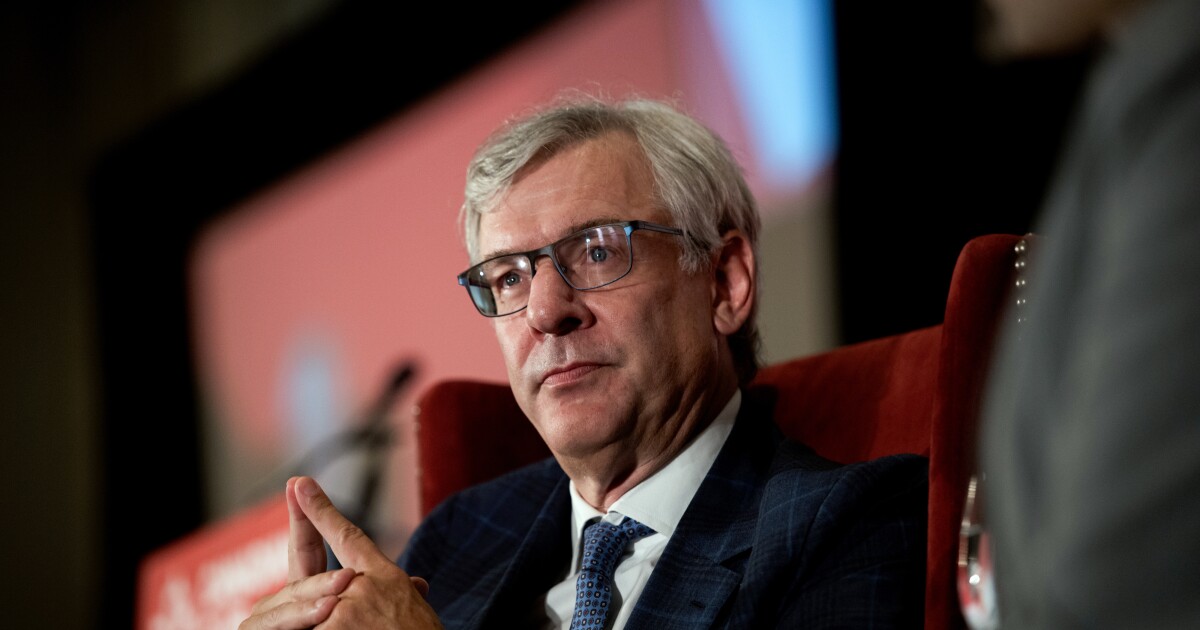The largest stocks’ artificial intelligence correlation and concentration are fueling the risk that the technology firms investing in chips and data centers at a massive scale are highly overvalued.
Those concerns will loom over the economy for the foreseeable future, regardless of AI’s transformative potential, record closes for the S&P 500, Dow and Nasdaq indices or milestones like Nvidia’s valuation of $5 trillion, Apple’s entrance into the $4-trillion club and OpenAI’s new for-profit structure. That’s why many financial advisors are educating clients about the possible pitfalls in U.S. equities and pointing to opportunities such as emerging markets, water, metals
Whether or not clients hold shares directly in any of the big tech firms, anyone invested in major indices like the S&P has a stake in AI, noted Andy Schwartz, CEO of Parsippany, New Jersey-based OnePoint BFG Wealth Partners, a registered investment advisory firm with more than 200 advisors and other employees and $15 billion in client assets. That “doesn’t mean that everything has to come down,” but the perils of a pullback at some point ahead signal the need to “find better places to be invested” for lots of clients, he said.
“They’re in this trade, whether they know it or not,” Schwartz said. “Because the concentration risk has gotten so large, you are in this trade. … The S&P 500 today is not what it used to be.”
That shrinking stock diversification outside of technology sectors and earnings questions, as well as the environmental and social impact of data centers that require huge water and energy consumption, explain why some are drawing comparisons to the dot-com bubble 25 years ago or asking the basic question of whether stock values have risen beyond a reasonable level.
Bair Financial Planning
The general excitement around tech like AI may just represent “a big black box, in a way,” to many investors, said Victor Orozco, a managing partner of San Diego-based advisory practice Bair Financial Planning. He’s also the co-manager of the firm’s High Impact Portfolios and a member of the Investment Strategy Committee of Wealth Consulting Group, an independent branch network where Bair is one of about 50 offices with 125 advisors managing $9 billion in client assets. The intensity of the freshwater usage required to support current and future data centers is causing a lot of the fear, he said.
READ MORE: The lure of private equity investing comes with these risks
AI struggles to create ROI
The largest tech firms certainly haven’t shown any signs of letting up on their AI investments — to the tune of several hundreds of billions of dollars, with only tens of billions of dollars in revenue from them thus far. As much as the large capital expenditures indicate investments in the future, they also raise red flags about whether OpenAI, Oracle and other big AI spenders will generate enough revenue to drive profitable returns, according to Peter Boockvar, the chief investment officer at OnePoint BFG. The AI data center boom has led to a situation in which OpenAI is “now too big to fail,” Boockvar wrote in a note last month.
“We’re highly concentrated, we’re highly dependent on a continuation of this AI data center development,” Boockvar said in an interview. “We’re concerned, and we’re watching whether we’re building too many.”
Advisors know how to guide clients through common investor biases like herding or recency and the human impulse toward panic in a volatility spike, but the math around AI investments could represent an altogether different type of challenge.
For instance, the projected AI energy demand of up to 100 gigawatts by 2030 entails capital expenditures of $500 billion per year and $2 trillion of corresponding revenue — which would leave a gap amounting to $800 billion in the necessary gross proceeds to finance those investments, even assuming there are savings through the use of the technology, consulting firm Bain & Company concluded last month. Other studies have similarly cast doubt on the profitability of companies’ AI rollouts, or even whether the automation actually makes anything faster. A group of 10 AI startups have combined to acquire $1 trillion in market valuation over the last 12 months, despite the fact that none of them generated any profit, the Financial Times reported earlier this month.
READ MORE: How much time is AI saving advisors? And how do they spend it?
The upshot
The sizable run-up in valuations offers only the latest reminder for clients to stick to their long-term plans and remember that major stock indices more than make up for any temporary slumps or falls over the decades, Schwartz said. No matter how many calls for caution spring up on any particular day, no one can say for sure when there could be a drawdown tied to AI.
“People should just try to better understand what they own, and they need to manage their liquidity,” Schwartz said. “It could take three months or three years for that to happen.”
Some portfolio strategies in the meantime could include vehicles tied to natural gas, nuclear energy or uranium enrichment or cooling tech, Boockvar said. “The market is very much leaning in one direction, and investors should be aware of that and more balanced in the market.”
Besides nuclear and cooling infrastructure, investment sectors tied to the water supply chain and other power-related sectors involved with transportation, smart meters, sensors, purification and semiconductors demonstrate some appeal, Orozco suggested. Clients focused on ESG criteria and impact will likely be asking about “the tradeoff for societal well-being for being next to one of these facilities,” and data centers will get “a competitive edge if they’re using companies that are being more responsible and more efficient” with water, he said.
No matter their view, clients will want to know how AI could affect their portfolios and present a chance for outsize returns over the long run, as well as the effects of the tech on their lives.
“It’s not going anywhere,” Orozco said. “For good or for bad, this is going to be in the crosshairs for a lot of different groups, and it’ll be very interesting to see how that pans out.”






